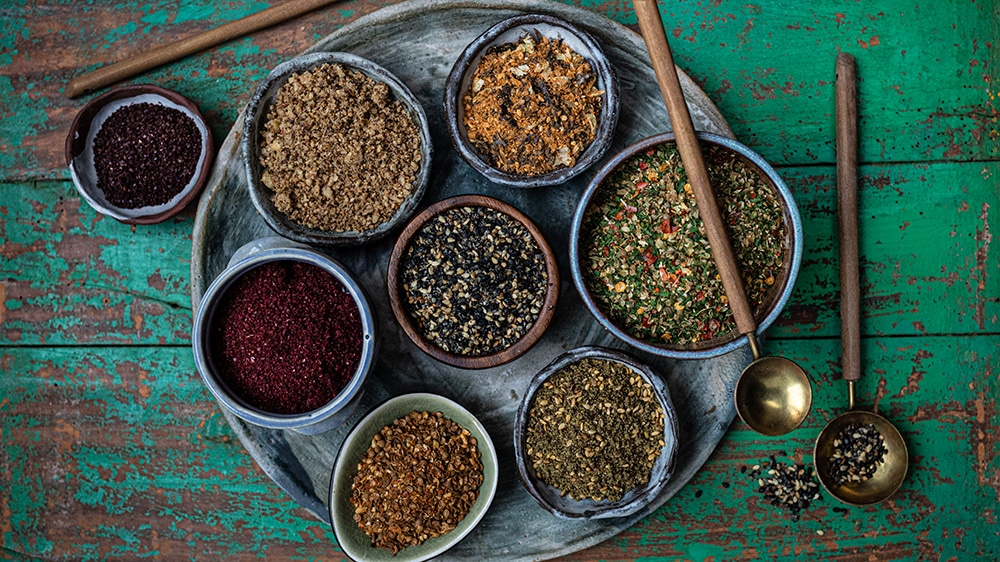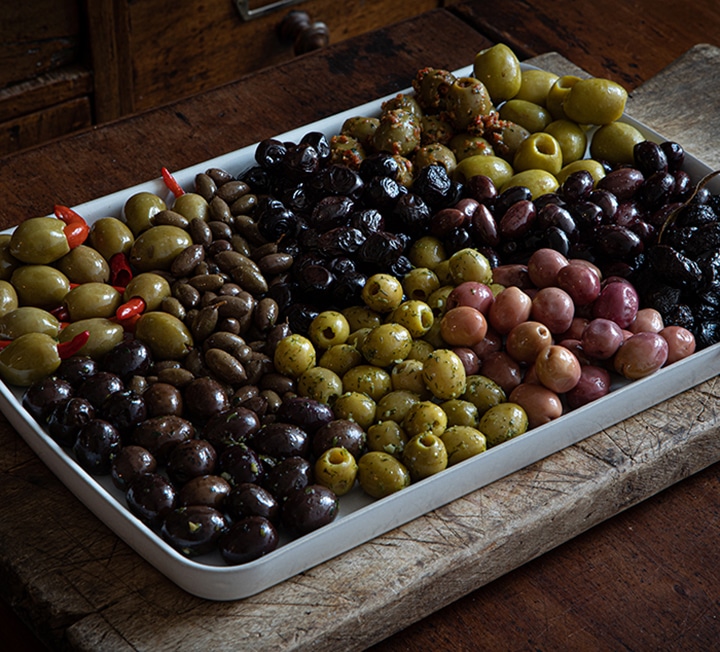Dress to impress: dry spice mixes
Ed Smith on the Market ingredients that with minimum effort and maximum effect can embellish a finished dish. This time: dry spice mixes


“THESE POWDERS ARE SUCH A BRILLIANTLY EFFECTIVE WAY OF ADDING LIP-TINGLING LAYERS OF FLAVOUR”
Image: Regula Ysewijn
Over the past two decades or so, British home cooks have been educated in the art/joy/craft of adding fresh herbs to a dish. It’s one of Jamie’s greatest gifts to us, I guess: the idea that fresh basil, mint, coriander, parsley or dill should be measured in fists, not pinches. He (and others no doubt) have freed us to add herbs as we might if we were in Tel Aviv, Tbilisi, Tehran or Hanoi: by the literal bunch.
That liberal scattering of fresh herbs might even be second nature now (as an aside, it’s easier to do when you buy vibrant yet delicate green leaves from a market greengrocer, rather than the little plastic packs in a supermarket). But I wonder whether our current enjoyment and appreciation of them means we forget that there’s also much to be said for seasoning and embellishing with dried herbs and spices. A heaped teaspoon or more of a spice mix at the end rather than mid-way through the cooking process can really ‘make’ a dish, too.
Cruise the shelves at Arabica and Spice Mountain, and in amongst the tempting pots and pouches are tubs of sumac, za’atar and dukkah. These spices and blends are increasingly part of our everyday larders; maybe not yet in the same way as you might find in the Middle East (where there are often pinch pots on tables in the same way we leave salt and pepper) but many of us will have them in a cupboard somewhere. There’s a chance they’re two-thirds full and fading in their potency. In which case, use them more often and in greater quantity!
The sharp citrus tang of sumac, the zingy fragrance of the dried oregano in a good za’atar, and the nutty crunch of dukkah: these powders are such a brilliantly effective way of adding lip-tingling layers of flavour to grains, leaves, grilled meats and roast vegetables. Yes, they’re dusty, which might seem off-putting at first, but, as with fresh herbs, it pays to add about twice as much as you think you need. Counterintuitively, the more it looks like you’ve dropped your great-uncle’s urn on, say, a platter of golden-crisp chicken thighs, the more alive they will be.
Spice Mountain’s blends go beyond the Middle East. I’m a fan, in particular, of the stall’s Japanese seasonings. One, gomashio, is technically just a mix of sesame seeds and salt. But it’s somehow far more than the sum of its parts, particularly good as a dusting for roast vegetables or steamed fish. Another, which you should acquaint yourself with if not already familiar, is shichimi togarashi: a blend of seven spices that majors on chilli powder, but also dried citrus and nori (seaweed). There’s heat, sourness, umami from the seaweed, a real shot in the arm for any rice-based dish or soup. Consider a scattering of ume plum sesame seeds too, which I noticed last time I was at the stall and haven’t yet tried, but suspect are a more-ish combination of sour and savoury.
There’s more: like tabil, a Tunisian and Algerian mixture consisting of coriander, garlic and caraway, and often the likes of mint, cloves and turmeric. We’re so used to putting these types of spices in among the onions as they soften, or perhaps in a stew while it bubbles down. But a last minute dusting over something like a lamb chop or even stirred through roast potatoes (or any fried potato) would be effective. Ditto a chimichurri blend of parsley, oregano, red pepper flakes, and garlic – something you could sprinkle on a steak or flatbread, but like za’atar is even more effective mixed with olive oil and drizzled.
Much can be done with all of these blends. On the one hand, it’s worth looking to their use in the countries they originate from. But I think we can use them more casually, too – if ever a mid-week meal or weekend egg feels bland, could it be transformed by a few spoonsful of dukkah or an explosion of shichimi togarashi? Probably. So next time you finish plating up and bemoan the fact you’ve forgot to add fresh herbs to your shopping basket, pause and consider whether there’s actually something dry and dusty in your spice cupboard that could be just as enlivening. Dust away.


